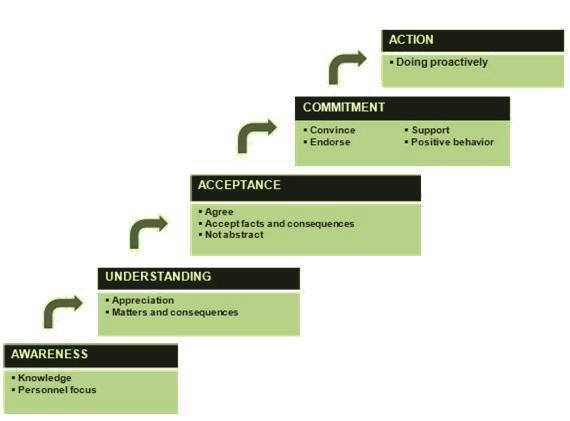 Working with virtual teams is a common place in multinational organisations these days. As we all know, next to motivation, loyalty between the local organisation and the virtual team can become a challenge for the people working in your virtual team. This challenge of staying loyal to the local organisation and at the same time to your team/you as their team leader might be aggravated in situations where you, as a functional leader, get only part of the working time of the person assigned to your responsibilities. In the following text, I will outline how I would deal with such situations in the most productive way. This does not guarantee success! However, you could use it as a trigger to create your own ideas and approaches most suitable for your organisational context.
Working with virtual teams is a common place in multinational organisations these days. As we all know, next to motivation, loyalty between the local organisation and the virtual team can become a challenge for the people working in your virtual team. This challenge of staying loyal to the local organisation and at the same time to your team/you as their team leader might be aggravated in situations where you, as a functional leader, get only part of the working time of the person assigned to your responsibilities. In the following text, I will outline how I would deal with such situations in the most productive way. This does not guarantee success! However, you could use it as a trigger to create your own ideas and approaches most suitable for your organisational context.
Organisational context
When analysing the situations where people, reporting to functional leaders, experience loyalty challenges it becomes very clear that actions have to be taken at two different levels. On one hand there is the working level, the relationship you develop with members of your virtual team, be it full or part-time. On the other hand, it is about managing the relationship between you and your team members’ bosses or other organisational power players who have an important position in the local organisation.
In order to visualise this situation in your organisational context I highly recommend to do a stakeholder analysis by mapping them in a particular grit. There are many ways to draw a stakeholder map. I have chosen to use one specific type of stakeholder mapping which I want to explain in the following text. Any stakeholder map splits the whole organisational construct into four quadrants. No matter what factor you would assign to the axis it is important to be very specific where you place the stakeholders as this determines how much effort you put into the relationship management of the different groups. The one model here uses on one axis the impact specific stakeholders can have on your area/project and on the other axis the influence or power they have in the organisation.
Below is a specific example of a map:

 If you see already specific challenges in your leadership role I highly recommend to do the stakeholder analysis and map all the stakeholders relevant to your area of responsibility as soon as possible. It may be even a good idea to involve the members of your virtual team in this exercise as they could give you much more insights on the power-plays happening at their local level.
If you see already specific challenges in your leadership role I highly recommend to do the stakeholder analysis and map all the stakeholders relevant to your area of responsibility as soon as possible. It may be even a good idea to involve the members of your virtual team in this exercise as they could give you much more insights on the power-plays happening at their local level.
As you can see in the picture the top right-hand quadrant is the most important one to look into when thinking about loyalty challenges your team members may be exposed to.
After you have mapped your stakeholders it is a good idea to determine what level of information, engagement or involvement the respective stakeholders need to be exposed to. For this step I recommend a particular thinking process which I have seen used very successfully in practice. It is shown in the graphic below.

At the lowest level your activity may just require a well structured information package for the local stakeholder. Obviously, the higher you move in the requirements the more you need to think about the needs these local stakeholders want to see fulfilled for themselves and their organisation.
In all steps, a key element is always the communication of the vision you hold for your work/project in which your virtual team will be involved. The higher you move in the above shown process the more specific you need to tailor your vision to the context of the respective stakeholder.
Key questions to ask yourself
To prepare yourself in the best way for the communication and relationship development for the stakeholders in the top right-hand quadrant of the map I recommend to reflect on the following questions which the stakeholders may have in the back of their minds when they think about delegating people to your area of responsibility:
- Why should this work get priority?
- What’s in it for me and my organisation? How can I benefit by delegating people to this functional leader?
- How would the person being delegated benefit from the involvement in this work?
- What risks do I have to take when releasing people to the functional leader?
I’m sure you can think of many more questions in the same frame of thinking.
Relationship management
Whatever you undertake to ensure that you get the best loyalty of your team members to your work area/project you need to make sure that you have a solid relationship management plan in place for the stakeholders which you have placed into the top right-hand quadrant of the stakeholder map. It should be an ongoing process through which you keep the relationship alive with the bosses/power players of the local organisations.
Of course you can create agreements with the members of your virtual team to take part of the responsibility of this relationship management activity with their bosses and the local power players. However, you cannot fully delegate this activity as hierarchical dynamics and thinking in the organisation culture are limiting the impact your team members might have in their local organisation.
Your team members
Of course your functional direct reports are also stakeholders and you should consider them as well when you think about maximising the loyalty to your work area. However, in this relationship it has to do with motivation, inspiration and compelling visions as it was covered in the workshop. As Simon Sinek outlines in his TED talk about the ‘The Golden Circle’ you have to start with a purpose of the work area and combine it with a very compelling vision. Both should be communicated on a regular basis and explained in a way that your functional direct reports feel full ownership for purpose and vision.
I hope these lines will help you think about how to approach loyalty challenges and how to deal with local power players.
Feel free to leave a comment or – if you want to discuss any of it in more detail – get in touch with me direct.



